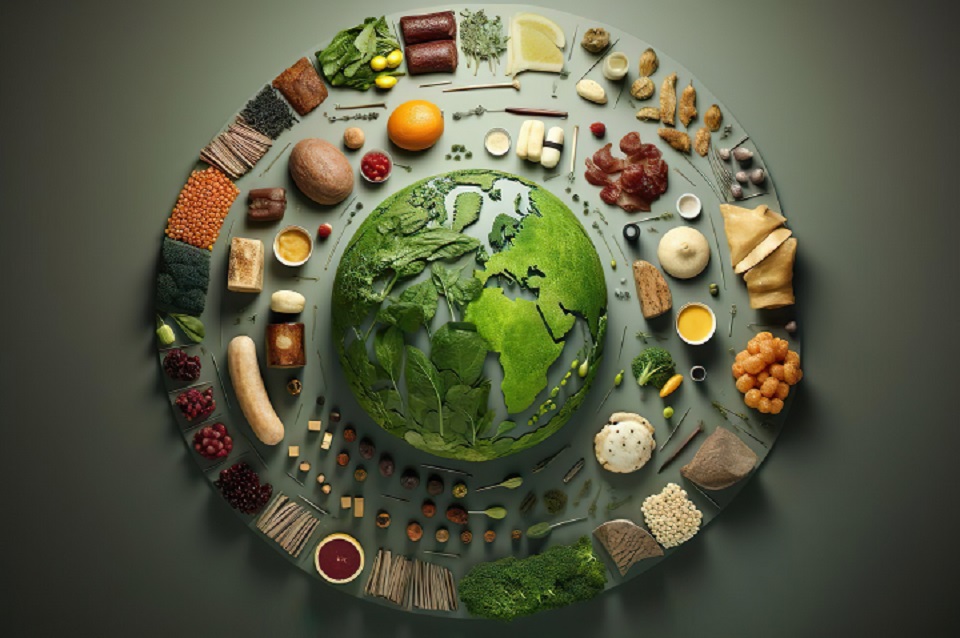The relationship between food security and climate change is a subject that is receiving more attention in the global conversation about sustainability. Food security is seriously threatened by climate change’s effects on agriculture and food systems, which are worsening. This blog post explores these issues and suggests possible solutions to guarantee food security in the face of climate change.
Understanding Food Security
According to the Food and Agriculture Organization (FAO) of the United Nations, there is food security when everyone, at all times, has physical, social, and economic access to enough, safe, and nutritious food that satisfies their dietary needs and food preferences for an active and healthy life. It covers four areas: food accessibility, use, stability over time, and availability.
Climate Change: A Threat Multiplier for Food Security
Global food security is facing unprecedented challenges as a result of climate change. The availability of food can be impacted by rising temperatures, changing precipitation patterns, and more extreme weather events that are both frequent and severe.
Shorter growing seasons, lower yields, and lower crop nutritional value are all effects of rising temperatures. The destruction of crops and livestock can result from droughts in some areas and flooding in other areas caused by shifting rainfall patterns. In addition, extreme weather conditions like hurricanes and cyclones can seriously harm agricultural infrastructure, impairing food distribution and production.
Climate change can also worsen plant pests and diseases and alter pollinator distribution and life cycles, which will have an even greater impact on crop productivity. Additionally, it contributes to ocean acidification and sea level rise, endangering fish stocks and the means of subsistence for communities that depend on them.
Towards Climate-Resilient Food Systems: Potential Solutions
Addressing this complex issue requires an integrated, multi-pronged approach to building climate-resilient food systems.
- Adaptation Strategies in Agriculture:
It is critical to implement climate-smart agricultural practices. This includes crop varieties that can withstand heat and drought, effective irrigation systems, and environmentally friendly soil management techniques that improve soil health and capture carbon. - Investing in Agricultural Research and Development:
Innovative solutions can come from research, such as genetically altered plants that can withstand harsh weather and technologies for precision farming that make the best use of water, fertilizer, and energy. - Improving Food Storage and Distribution:
The availability of food can be significantly increased by reducing post-harvest losses through improved infrastructure for storage and transportation. This is especially important for developing nations because of how frequently such failures occur. - Enhancing Early Warning Systems and Crop Insurance:
Farmers can plan their planting and harvesting with the aid of current climate information. Schemes for crop insurance can act as a safety net for farmers in the event of crop failure. - Promoting Dietary Diversification:
By changing diets to include locally grown foods and more climate-resistant crops, we can improve food security and ease the strain on the food system. - Strengthening Social Safety Nets:
By giving vulnerable populations the means to buy food, strengthening social protection programs can protect them from the effects of climate shocks. - Addressing Climate Change at its Root:
To ensure long-term food security, mitigating climate change by reducing greenhouse gas emissions is crucial.
Conclusion: Securing Our Food Future
Securing food security for everyone becomes more difficult but unquestionably crucial as climate change continues to disrupt our planet. Despite the sizeable problems, there are solutions, and we have the information and resources to put them into practice.
Building climate-resilient food systems will help achieve other Sustainable Development Goals like fighting poverty, promoting health and well-being, and encouraging responsible consumption and production in addition to ensuring that everyone has access to enough nutrient-dense food.
We can feed our expanding population in a way that is both equitable and sustainable in a changing climate by integrating climate actions into all facets of food systems, from production to consumption. The stakes — our food future — could not be higher, but it takes group effort, political will, and significant investment. Not at all

